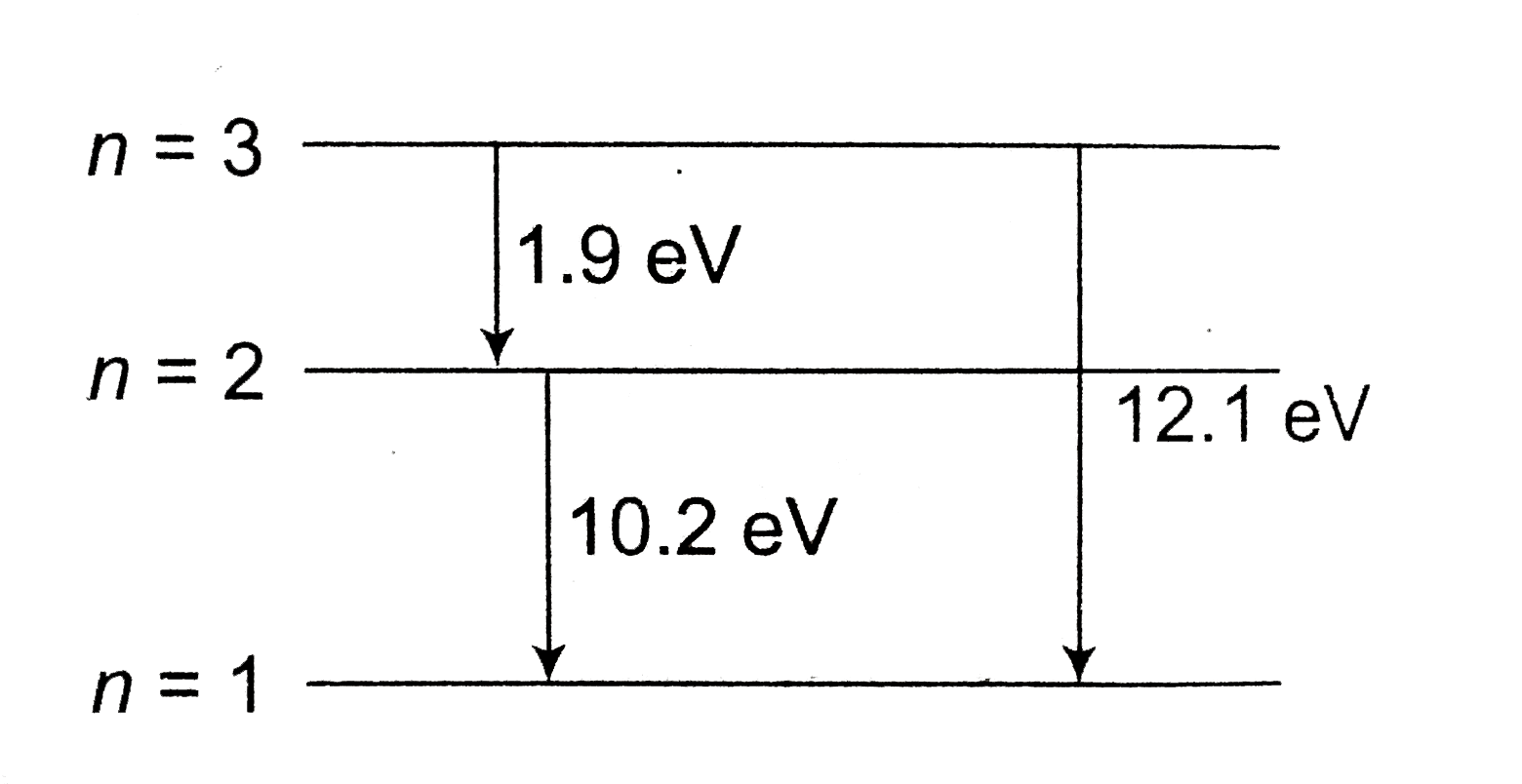Three photons coming from excited atoms hydrogen sample are picked up .There energies are 12.1eV,10.2eVand1.9eV these photons must come from
a single atom
two atoms
three atoms
either two atoms or three atoms
The correct Answer is:D

1.9 eV 10.2 eV photon may be emitted by one atom or two different atoms.
12.1 eV will be due to another atom.
Topper's Solved these Questions
Similar Questions
Consider a hydrogen-like atom whose energy in nth excited state is given by
En=−13.6Z2n2
When this excited makes a transition from excited state to ground state , most energetic photons have energy
Emax=52.224eV. and least energetic photons have energy
Emax=1.224eV
Find the atomic number of atom and the intial state or excitation.View SolutionA hydrogen like atom (atomic number z) is in a higher excited state of quantum number n. This excited atom can make a transition to the first excited state by successively emitting two photons of energies 10.2eV and 17.0eV respectively. Alternatively the atom from the same excited state can make a transition to the second excited state by successively emitting 2 photons of energy 4.25eV and5.95eV respectively. Determine the value of (n+z)
View Solution
Knowledge Check
- Question 1 - Select One
Three photons coming from excited atoms hydrogen sample are pickedup .There energies are 12.1eV,10.2eVand1.9eV these photons must come from
Aa simple atomBtwo atomsCthree atomsDeither two atoms or three atoms - Question 2 - Select One
Three photons originating from excited atomic hydrogen atoms are found to have energies of 0.66 eV , 1.89 eV and 2.55 eV respectively . The minimum no. of atoms that must be present are :
Aone atomBtwo atomsCthree atomsDcan't say - Question 3 - Select One
For ionising an excited hydrogen atom, the energy required ( in eV) will be :
Aa little less than 13.6B13.6Cmore than 13.6D3.4 or less
A hydrogen like atom (atomic number Z) is uin a higher excleted atate of quantum n , The excited atom can make a two photon of energy 10.2and17.0eV respactively , Alernately the atom from the same excited state by successively eniting two photons of energies 4.25eVand5.95eV respectively
Determine the value of n and Z (lonization energy of H- atom =13.6eV)View SolutionA hydrogen like species (atomic number Z) is present in a higher excited state of quantum number n. This excited atom can make a transitionn to the first excited state by successive emission of two photons of energies 10.20 eV and 17.0 eV respectively. Altetnatively, the atom from the same excited state can make a transition to the second excited state by successive of two photons of energy 4.25 eV and 5.95 eVv respectively. Determine the value of Z.
View SolutionA photon collides with a stationary hydrogen atom in ground state inelastically. Energy of the colliding photon is 10.2 eV. After a time interval of the order of micro second another photon collides with same hydrogen atom inelastically with an energy of 15eV. What wil be observed by the detector?
(a) 2 photons of energy 10.2 eV
(b) 2 photons of energy 1.4 eV
(c ) One photon of energy 10.2 eV and an electron of energy 1.4 eV
(d) One photon of energy 10.2 eV and another photon of energy 1.4 eVView SolutionFor ionising an excited hydrogen atom, the energy required ( in eV) will be :
View SolutionThe ionization energy of the electron in the lowest orbit of hydrogen atom is 13.6 eV. The energies required in eV to remove an electron from three lowest energy orbits of hydrogen atom respectively are
View Solution

